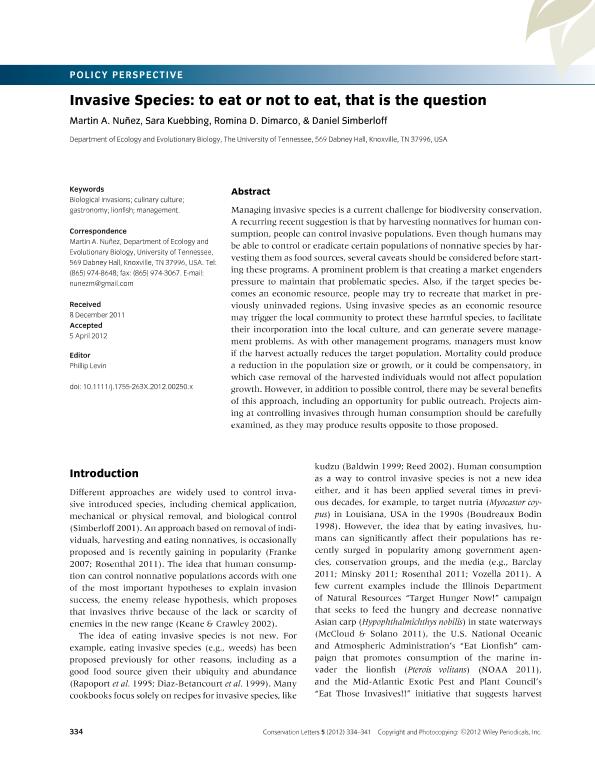Artículo
Invasive Species: To eat or not to eat, that is the question
Fecha de publicación:
10/2012
Editorial:
Wiley Blackwell Publishing, Inc
Revista:
Conservation Letters
ISSN:
1755-263X
Idioma:
Inglés
Tipo de recurso:
Artículo publicado
Clasificación temática:
Resumen
Managing invasive species is a current challenge for biodiversity conservation. A recurring recent suggestion is that by harvesting nonnatives for human consumption, people can control invasive populations. Even though humans may be able to control or eradicate certain populations of nonnative species by harvesting them as food sources, several caveats should be considered before starting these programs. A prominent problem is that creating a market engenders pressure to maintain that problematic species. Also, if the target species becomes an economic resource, people may try to recreate that market in previously uninvaded regions. Using invasive species as an economic resource may trigger the local community to protect these harmful species, to facilitate their incorporation into the local culture, and can generate severe management problems. As with other management programs, managers must know if the harvest actually reduces the target population. Mortality could produce a reduction in the population size or growth, or it could be compensatory, in which case removal of the harvested individuals would not affect population growth. However, in addition to possible control, there may be several benefits of this approach, including an opportunity for public outreach. Projects aiming at controlling invasives through human consumption should be carefully examined, as they may produce results opposite to those proposed.
Palabras clave:
BIOLOGICAL INVASIONS
,
CULINARY CULTURE
,
GASTRONOMY
,
LIONFISH
,
MANAGEMENT
Archivos asociados
Licencia
Identificadores
Colecciones
Articulos(INIBIOMA)
Articulos de INST. DE INVEST.EN BIODIVERSIDAD Y MEDIOAMBIENTE
Articulos de INST. DE INVEST.EN BIODIVERSIDAD Y MEDIOAMBIENTE
Citación
Nuñez, Martin Andres; Kuebbing, Sara; Dimarco, Romina Daniela; Simberloff, Daniel; Invasive Species: To eat or not to eat, that is the question; Wiley Blackwell Publishing, Inc; Conservation Letters; 5; 5; 10-2012; 334-341
Compartir
Altmétricas




